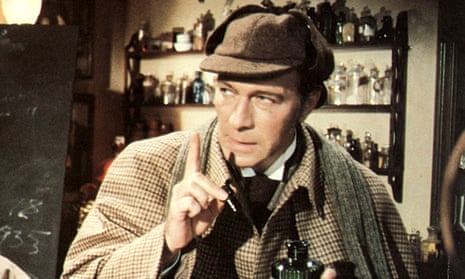A memory technique invented by the ancient Greeks can make dramatic and long-lasting improvements to a person’s power of recall, according to research that suggests many of us have extensive untapped memory reserves.
After spending six weeks cultivating an internal “memory palace”, people more than doubled the number of words they could retain in a short time period and their performance remained impressive four months later. The technique, which involves conjuring up vivid images of objects in a familiar setting, is credited to the Greek poet Simonides of Ceos, and is a favoured method among so-called memory athletes.
The study also revealed that after just 40 days of training, people’s brain activity shifted to more closely resemble that seen in some of the world’s highest ranked memory champions, suggesting that memory training can alter the brain’s wiring in subtle but powerful ways.
Nils Müller, a neuroscientist at Radboud University and a co-author, said: “One of the initial questions was whether memory athletes have very differently wired brains. Do they have an innate gift that just can’t be taught?”
The answer, perhaps surprisingly, was no. Prodigious feats of memory such as recalling hundreds of binary digits or a Sherlock-like ability to put a name to a face are likely to be mostly down to hours of training and using the right mnemonic techniques, the scientists concluded.
The study, published in the journal Neuron, recruited 23 of the 50 top-scoring memory athletes in an annual contest called the World Memory Championships. The athletes were given 20 minutes to recall a list of 72 random nouns and they scored, on average, nearly 71 of the 72 words.
By contrast, an untrained control group recalled an average of 26 words. This group then followed a daily 30-minute training regime where they practiced walking through a chosen familiar environment, such as their own home, and placing objects in specific locations.
Simonides was supposedly inspired to develop the “loci” technique after a gruesome tragedy in which a banqueting hall collapsed just after the poet had left the building. Some of his fellow diners were crushed beyond recognition, meaning they could only be identified based on the table plan.
Boris Konrad, a neuroscientist at the Max Planck Institute of Psychiatry in Munich who co-authored the study, said: “You really walk through a place and then later you visualise the location to place an object there. You’re not just wandering around in your crazy mental palace.”
It also helps for the image to be vivid, bizarre and firmly placed in the location. In the book Moonwalking with Einstein, the memory expert Ed Cooke suggests remembering an item on a shopping list by imagining “Claudia Schiffer swimming in [a] tub of cottage cheese.”
Konrad, who also happens to be ranked 24th in the World Memory Championships, said the strategy is effective because it maps boring information onto something that the brain has evolved to do extremely well – recall imagery in specific locations.
“You take material that is really hard to remember and transform it into something accessible,” he said. “It does not make your memory capacity bigger; you use a different form of memory that already has a large capacity.”
After 40 days of 30-minute training sessions, the participants who had average memory skills at the start more than doubled their memory capacity, recalling 62 words on average – and four months later, without continued training, they could remember 48 words from a list of 72.
Martin Dresler, also a neuroscientist at Radboud University and the first author, said: “Once you are familiar with these strategies and know how to apply them, you can keep your performance high without much further training.”
The scientists also studied the brains of their participants and, while there were no telltale signs of memory prowess based on anatomy, subtle differences were seen in the background brain activity of the memory athletes and ordinary subjects when they were asked to simply relax and let their minds wander. This kind of “resting state” scan is designed to give a measure of the brain’s connectivity – essentially a measure of how tightly disparate clusters of neurons are wired together.
After training, the background hum of brain activity in the ordinary participants had shifted to more closely match that seen in the champions – and the closer the resemblance, the better the person’s performance was likely to be.
“After training we see massively increased performance on memory tests,” said Dresler. “Not only can you induce a behavioural change, the training also induces similar brain connectivity patterns to those seen in memory athletes.”
“I would speculate that it reflects activity-dependent rewiring,” said Müller.
Konrad believes that “not everyone can become a champion” – even within the trained group some people fared far better than others. “But everyone using the technique can improve quite substantially from the level they’re at,” he added.

Comments (…)
Sign in or create your Guardian account to join the discussion